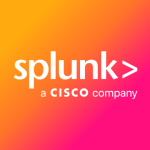What is our primary use case?
Our SOC is using Splunk Enterprise Security as a SIEM. There are multiple use cases because it is the main tool for SOC analysts. We have plenty of use cases. It is being used for IT security monitoring. We also have some custom use cases for securing applications, and then we have some of our internal customers developing their own use cases, but the main purpose is for the SOC.
We also have additional work that is much more tricky. It is related to using AI to detect insider threats.
How has it helped my organization?
We are incredibly increasing our coverage as per the NIST framework that we are using for our operations. We are always extending. That really took off after implementing Splunk. It was a big moment. I have been there from the very beginning when we started implementing Splunk. Like everything new, there was a little bit of difficulty, but after we implemented it, there was an incredible increase in our SOC efficiency.
Splunk Enterprise Security helped reduce our mean time to resolve based on my knowledge, but I do not know how much because I left the department one year ago. On the security monitoring side, we have very good MTTR globally due to Splunk and the processes that we have implemented. We have other kinds of tools. Compared to the other tools that we have, our MTTR is far better with Splunk. Compared to last year, it was reduced by half. It was already good, but it got reduced a lot again.
What is most valuable?
It is lovely to have everything we need in one tool. Everything is quite centralized.
What needs improvement?
AI is everywhere, and I feel we need to discover AI for cybersecurity. For the last five years, I myself have been setting up a product and evaluating AI, but I did not do it directly in Splunk because there was some fear about the performance on the platform. That is why we chose to build our own platform based on S3 and AWS to execute and run all the algorithms and send the data back into Splunk. We now have a good base with innovation. We have a better base to directly include machine learning use cases in Enterprise Security, but they need to provide more capability and autonomy to the customers because there is so much to do. When you are lucky enough to have a team of data scientists, they want to have free hands, so a balance has to be found between giving a lot of autonomy and putting enough control so that they do not do something stupid on the platform, which can impact the performance of the standard use cases as well. There is a compromise there. However, AI is growing so fast that you absolutely need to give autonomy to the team to manage and utilize AI. This means providing easy access to a new library to build machine learning. They need to give us some flexibility, and it seems that with the new toolkit, it would be okay. Data scientists love to have freedom.
Splunk Enterprise Security provides us with the relevant context to help guide our investigations, but it would be interesting to add even more context, for instance, in order to raise the level of risk. That is something that can be implemented. For instance, when it comes to data loss prevention, it is known that somebody who is about to leave the company is much more likely to take data. If you have this information soon enough, because the person will tell HR in advance, you can increase the level of risk for data loss for that user, but you do not always get to know that in advance. In such cases, some indicators in the behavior of the users who are leaving could be connected to AI. For instance, if you are using natural language programming, you can grab emails with words like farewell. There are plenty of keywords that you can catch that would give you an indication that the person is about to live. When you have internal and external partners, they can leave at any time. You do not always get the information in advance, but there are always farewell parties or goodbye emails. You can use this kind of information to raise their risk on the specific alert. It is efficient in the sense that you decrease your false positive rate. To me, AI is something that can help them accelerate and improve on what they are already doing.
Splunk Enterprise Security is very costly. Pricing is probably its weakest spot.
For how long have I used the solution?
I have been using Splunk Enterprise Security for five years.
What do I think about the stability of the solution?
It is difficult for me to answer this because I am no longer in charge now, but it has been stable from my point of view.
What do I think about the scalability of the solution?
Its scalability is good provided you have the right license agreements.
How are customer service and support?
It depends on the situation. The problem at our end that is causing an issue with Splunk support is that we have a customized environment. All the problems that we submit are specific, and they can be a bit difficult to solve. Sometimes, their support is efficient, and at other times, we have to wait a bit too much. I would rate their support a seven out of ten.
How would you rate customer service and support?
Which solution did I use previously and why did I switch?
I arrived at the time of transition. We were probably using RSA. We switched to Splunk Enterprise Security because we needed to jump to another scale. At that time, there was a complete change in the organization. We went from the old-school cyber to Cyber 2.0. We had a lot more visionary managers who came from other companies where they were using Splunk. We had good guidance.
How was the initial setup?
It was a bit difficult. The team that was developing the use cases did not have access to the real data because it was not ready yet. Developing a SOC use case without the data is something difficult. That is why it was difficult at the start, but it was not because of the tool. It was more of a matter of project management. After we moved on from the difficult stage, we were able to set up this use case factory where some of the users were themselves in a bit of self-service mode. This was a very good opportunity to enlarge our capability to cover all the applications in the best way.
For Splunk, we use AWS. We have a private cloud. We have difficulty using cloud-managed services.
What's my experience with pricing, setup cost, and licensing?
Pricing is probably its weakest spot. As compared to some competitors, Splunk is really expensive. The problem is that Splunk is like Rolls-Royce. It, for sure, is the best one. Gartner says it, and the customers say it, but sometimes, you do not need a Rolls-Royce to get to the supermarket.
The problem is that the licenses that we have are based on the volume of data that we ingest in a day. The data that we ingest is only growing. We have initiatives right now for better management of data. It makes sense in terms of storage and sustainability. The pricing model, especially for Europe, is difficult. I am just out of the negotiation for the renewal of the license. We bought it for three more years. This is good news for Splunk and us as well, but it was difficult to discuss with the sales and explain that we do not want to increase the cost because it is already too high, and if it could decrease, it would make sense. It is very difficult to have this understanding from the salesperson. It was difficult for my Splunk account partner, but we succeeded in the negotiation. It was a win-win situation.
They need to be fair and adjust the price as per the usage. If the price goes too high, we would just have a no-go from the top level of the company, which would be a pity. It can happen. It has happened in the past. At some point, we had a big contract with Microsoft for Office, and we are now with Google. It was a shock for the partners and people inside the company, but we did it. We now have Google and we are happy with it. We still have a bit of Microsoft. It is important to keep the balance.
We are looking at the data usage with Splunk's team. We are looking at whether the data onboarded and dashboards that were developed are really being used to avoid wastage. If any data is not necessary in Splunk, we just stop onboarding it. We have other data to onboard anyway. My idea is to be much more efficient in the way we are managing the data and not to go the way we did it in the past.
Which other solutions did I evaluate?
I did not evaluate other solutions but the company surely did.
What other advice do I have?
Splunk's unified platform has not helped consolidate networking, security, and IT observability tools, but it is not due to the tool. It is due to our company's structure. I have been part of the two teams. Previously, I was a part of the cybersecurity team, so I was mainly using Splunk Enterprise Security. Now I am leading the monitoring team, so I am much more on the SOC side of it. My team provides service to the cybersecurity team that is using Splunk Enterprise Security. In the end, we would like to have one solution, which would be Splunk. I would like to have IT monitoring and observability with ITSI in the future. This centralization would bring efficiency. One log being used for cybersecurity purposes can also be used for other purposes. Everything centralized would give us the most efficient way to access the data and limit duplication. It would be helpful for efficiency, cost control, and data governance.
It is absolutely crucial for us to have end-to-end visibility. For our cybersecurity needs, we should be able to reach anything. We even have this concept of Watch the Watcher, so visibility is absolutely key. We have the opportunity to audit the activities of even cyber analysts, so visibility at every stage is absolutely key. For example, all the SIEMs could be under attack, which would be a nightmare. Imagine it being an insider threat where the attacker knows what exactly we are monitoring. With AI, these kinds of risks are even higher. That is why we are all in for AI for Cyber and Cyber for AI. We need absolute visibility, but we also need protection.
Splunk Enterprise Security has not helped us reduce our alert volume. We are not at that level of maturity at this point. It is still growing.
I would rate Splunk Enterprise Security a nine out of ten. It is a good product. It needs some progress with AI, but based on what I have seen in the presentation for version 8, it seems promising.
Disclosure: My company does not have a business relationship with this vendor other than being a customer.



















